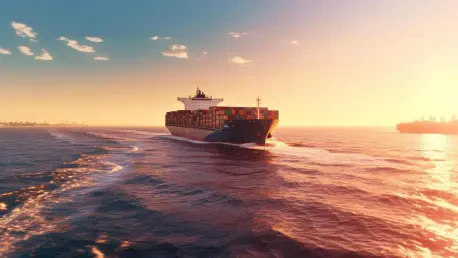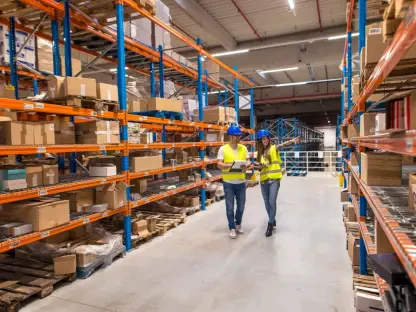Introduction to Cost Avoidance in the Shipping Industry
In an era where global trade faces unprecedented financial strain, the shipping industry grapples with mounting pressures from new regulations, such as substantial U.S. fees on China-linked vessels set to impact operational budgets significantly. These fees, poised to reshape cost structures, underscore a critical need for strategic adaptation among carriers striving to remain competitive. Cost avoidance has emerged as a pivotal approach, allowing companies to sidestep escalating expenses without compromising service quality or passing burdens onto customers. This analysis delves into the latest trends shaping cost avoidance in shipping, exploring real-world applications, expert insights, future implications, and essential takeaways for industry stakeholders navigating this complex landscape.
The significance of these strategies cannot be overstated, as they serve as a buffer against rising operational costs driven by geopolitical trade policies. With profit margins under threat, shipping firms are compelled to innovate and optimize to maintain market position. This article aims to unpack how the industry is responding to these challenges through emerging practices and what lies ahead in an ever-evolving regulatory environment.
Emerging Trends in Cost Avoidance Strategies
Data and Industry Shifts
Recent data highlights the scale of financial challenges facing the shipping sector, with new U.S. fees imposing charges ranging from $18 per net ton to $120 per container starting later this year. This regulatory shift is prompting a noticeable trend among major carriers toward strategic vessel redeployment and network optimization to minimize exposure to such costs. Industry reports indicate a growing emphasis on rerouting vessels to avoid high-fee zones, reflecting a broader movement to protect profitability.
Events like a prominent supply chain outlook discussion held earlier this year further underscore how cost avoidance is becoming a central focus for industry leaders. Analysts predict that over the next two years, from now to 2027, an increasing number of shipping firms will adopt data-driven approaches to reconfigure trade lanes. This shift is not merely reactive but signals a proactive effort to anticipate and mitigate future regulatory impacts.
The momentum behind these trends is evident as companies invest in analytics to identify cost-efficient routes and partnerships. Such adaptations are reshaping global shipping networks, with a clear pivot toward flexibility as a cornerstone of financial resilience. This evolving landscape suggests that cost avoidance is no longer optional but a critical component of strategic planning.
Real-World Applications and Case Studies
A prime example of cost avoidance in action is Maersk’s decision to redirect China-built ships to non-U.S. trade lanes, effectively dodging the impending fees. This operational agility allows the company to maintain service continuity while sidestepping significant financial penalties. Maersk’s approach demonstrates how large carriers can leverage extensive global networks to adapt swiftly to policy changes.
Other shipping companies and alliances are likely following suit, with industry predictions pointing to similar rerouting strategies across key players. For instance, vessels originally servicing transpacific routes to U.S. ports are now being reassigned to intra-Asia or Europe-bound lanes. This trend illustrates a collective industry effort to minimize regulatory cost exposure through tactical redeployment.
Specific scenarios, such as the redirection of cargo flows away from major U.S. hubs like Los Angeles to alternative ports in Canada or Mexico, highlight the practical impact on global shipping networks. These adjustments, while effective in avoiding fees, necessitate careful coordination to prevent service disruptions. The ripple effects of such changes are reshaping trade dynamics, underscoring the tangible outcomes of cost avoidance strategies.
Expert Perspectives on Cost Avoidance Challenges
Industry leaders offer valuable insights into the complexities of implementing cost avoidance measures. Anders Sonesson of Maersk has emphasized the importance of shielding customers from additional costs, arguing that passing on fees undermines trust. This customer-centric stance reflects a broader commitment to maintaining long-term relationships amidst financial pressures.
Contrasting yet complementary views come from professionals like Brian Kobza of IMC Logistics, who warns of potential supply chain disruptions stemming from route consolidation. Concentrating vessel traffic at fewer ports to avoid fees risks creating congestion, leading to delays and inefficiencies. This perspective sheds light on the unintended consequences that could offset the benefits of cost avoidance.
A consensus exists among experts on the need to balance regulatory compliance with operational efficiency. However, skepticism persists regarding the effectiveness of policies like the U.S. fees in achieving goals such as boosting domestic shipbuilding. Many argue that while the intent is to strengthen national interests, the practical outcome may be higher shipping costs and strained logistics, prompting a reevaluation of such measures’ long-term viability.
Future Outlook for Cost Avoidance in Shipping
Looking ahead, cost avoidance strategies are likely to drive sustained shifts in trade lane priorities, with carriers potentially favoring regions with fewer regulatory burdens. Investments in alternative vessel sourcing, such as acquiring ships built outside targeted jurisdictions, may become more common. These adaptations could redefine how shipping networks operate over the coming years.
Potential benefits include enhanced network flexibility, enabling companies to respond swiftly to policy changes. However, challenges loom, such as increased congestion at non-U.S. ports due to concentrated traffic and higher indirect costs from longer or less efficient routes. Balancing these trade-offs will be crucial for maintaining service reliability.
Evolving trade policies will undoubtedly continue to shape cost avoidance tactics, fostering innovation in logistics while posing risks to supply chain stability. Positive outcomes, like the development of advanced route optimization tools, could emerge alongside negative impacts, such as diminished predictability in delivery schedules. The industry must brace for a future where adaptability remains paramount amid shifting geopolitical currents.
Conclusion and Key Takeaways
Reflecting on the discussions that unfolded, it becomes clear that Maersk’s proactive redeployment of vessels marked a significant step in navigating regulatory hurdles, while the broader industry trend leans toward operational flexibility to counter cost pressures. The looming risks of supply chain bottlenecks, as highlighted by expert warnings, serve as a cautionary note against over-reliance on concentrated routing.
Looking back, the importance of cost avoidance strategies in managing a complex regulatory landscape stands out as a defining factor for the shipping sector’s resilience. Industry stakeholders are urged to take actionable steps by investing in predictive analytics and forging strategic alliances to mitigate future disruptions. Advocating for balanced trade regulations that minimize logistical strain emerges as a critical consideration, ensuring that adaptation does not come at the expense of global trade efficiency.









